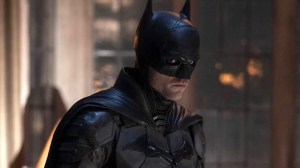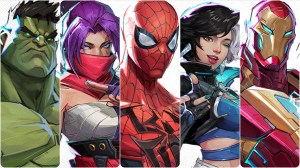You know what’s a great Christmas comic book? “Batman: Ego”
Videos by ComicBook.com

Now, you could argue that it isn’t really a Christmas comic. There’s just one scene that’s an allusion to A Christmas Carol after all.
But, then, people think “Die Hard” is a Christmas movie, so I’m going to take advantage of that leniency to create a hook for this week’s column.
The Backstory
“Batman: Ego” kickstarted Darwyn Cooke’s career in the world of comic books. It started as a pitch he made to DC that wasn’t picked up. After spending time in the animation trenches storyboarding shows like “Batman: The Animated Series” and “Superman: The Animated Series,” DC installed a new art editor in Mark Chiarello. While clearing out the slush pile, Chiarello saw the “Ego” pitch and asked Cooke if he still wanted to do it.
This was almost four years later.
Comics happen in crazy ways sometimes.
A Batman of Two Minds
“Batman: Ego” is, as the name might suggest, a story of Batman psycho-analyzing himself. While the book has its share of action and visual delights, it’s ultimately a story of Bruce Wayne versus Batman for control.
One of the many things Cooke does right in the story is to personify that brutal, take-no-prisoners Batman side of Bruce Wayne’s personality. He appears as a larger than life demon, with pointy edges and sharp teeth, towering over Wayne and demanding his power.
Wayne has to decide how or if he can work with this side of his personality.
Cooke’s script is smart. While it tackles the duality of Wayne and Batman strongly, the story also does block some obvious objections along the way. Bruce Wayne is quick to point out how obvious and how over the top his demonic other half is, for example.
But Cooke hammers it home. The Batman side is a vicious and scary looking demon. The whole conversation happens in the larger than life Batcave, complete with the giant penny, oversized dinosaurs, and crazy computer construction that can show just what it needs to when the story needs it.
The argument between the two halves isn’t one-sided. Both make good points. Both have needs to survive. The resolution of this mental game needs to be satisfying and realistic. One or both of them will need to convince the other to change, or to think creatively to bring about a merging of the two sides — or, somehow, the victory of one side and the elimination of the other.
I think Cooke pulls the ending off well, and then incorporates it into a bit of story at the end that helps to show it off in the span of just two pages.
How Cooke Tells the Story
This whole story is not usually my kind of thing. Dramatizing a built-in personality conflict with demons is enough to make me roll my eyes. Few people can pull it off. Right now, Ed Brubaker and Sean Phillips are coming the closest in their series, “Kill or Be Killed”. Others fail miserably, such as most times an X-Men story moves to the Astral Plane, where make believe versions of people have make believe fights that may have impact on the real world if that’s what the writer chooses to do.
It’s kind of like most Doctor Strange stories where the rules of magic can change to give the writer whatever ending they need.
This split personality between Wayne and Batman, though, is so classic and so well-documented that dramatizing it in this way feels natural. Cooke works something out on the page that plenty of arguments in comic shops have raged on about over the years.
But, most of all, he shows the argument in a compelling way, visually.
This whole thing would have been easy enough to stage as Bruce Wayne looking anguished by himself, while internal caption boxes carry the conversation. Cooke was a gifted enough storyteller, no doubt in part from his animation training, to stage the scene in such a way that there’s visually interesting parts of the book along with every part of the conversation. It’s not just the staging, but also in the page composition.

Take this page. Like most in the story, it’s a nine panel grid. Here, Wayne is debating his demonic Batman alter ego, who takes up most of the center of the page, across all panels.
It’s not always him in each panel. Sometimes, it’s just a the specific shape of a shadow, or the back of a statue. When viewed from afar, it’s the demon Batman crouched over the whole page. From panel to panel, it’s a shadow on a wall, or a dark area behind a bat, or the hand of the demon facing the opposite way.
Study it long enough and your mind will boggle. It’s great stuff.
When you ask me why I love comics, I can point to a page like this. It’s the blend of words and pictures to tell stories in ways no other medium can.
Batman Visual Tropes
We’ve all see the pearl necklace break apart in the air. We’ve all seen the bullet flying out of Joe Chill’s gun. We’ve all see that heartbreaking overhead shot in Crime Alley with young Bruce Wayne sitting between his dead parents. How about Bruce Wayne sitting at the window when a bat breaks through the window?
Darwyn Cooke pulls off all of those shots in this story in completely different ways. He doesn’t ape Frank Miller’s version. He incorporates his own storytelling style to put those moments across.

Here’s a full page splash when his parents are killed. Bruce standing on top of the gun. The exploding muzzle of the weapon blows out the light in one eye, his parents silhouetted over that.
Here’s my favorite transition, right on page three:

Batman flashes back to the gun shot. The bullet comes out of the chamber. The similar compositions connect Batman to young Bruce Wayne’s horrified face, frozen in a moment where the bullet hangs in the air and everything goes the perfect shade of red.
The whole story looks great. Cooke synthesizes a lot of stuff from the animated series into the standard comic continuity and style. The art deco look of the city is on point. The simpler look of the characters gives Cooke a lot of room to make them super expressive and move them as he needs to.
And, on its surface, it’s straightforward panel to panel storytelling. Every angle is well chosen and every cut from one to the next has a purpose.
Get It Now

There is a collected edition called “Batman: Ego and Other Tales” that collects this original one shot along with a few other Darwyn Cooke stories from the Bat office. It includes a couple of “Batman Black and White” stories Cooke did that are worth the price of admission alone, also.
The book is available in print and digitally today, so jump right on in. “Batman: Ego” is, effectively, Darwyn Cooke’s comic book debut. It’s scary how good he was out of the gate like this.
PipelineComics.com|| Twitter || Instagram || E-mail || YouTube





